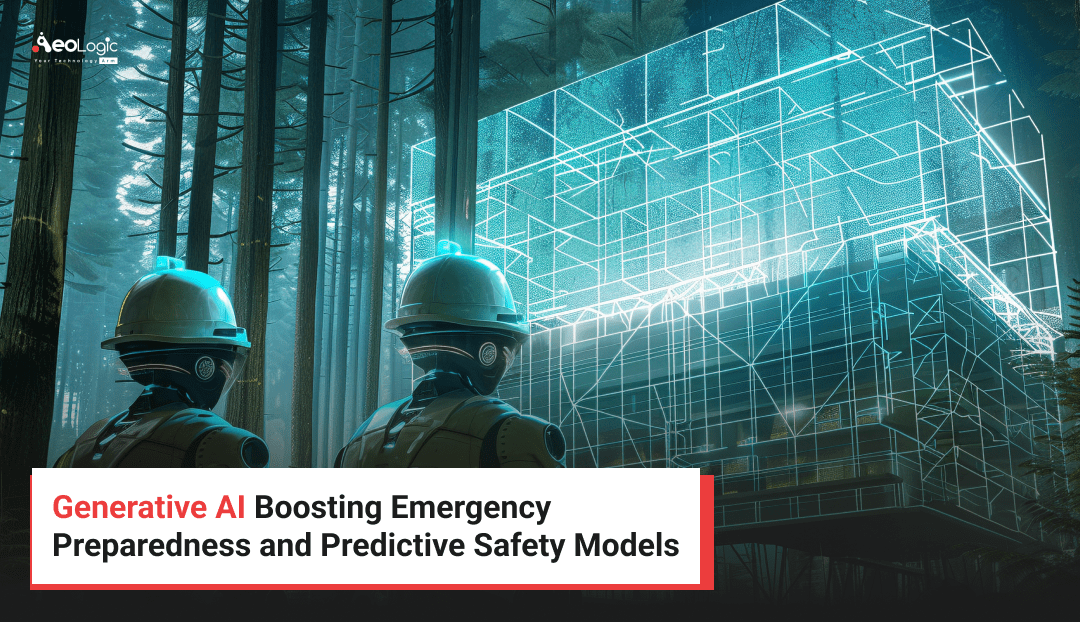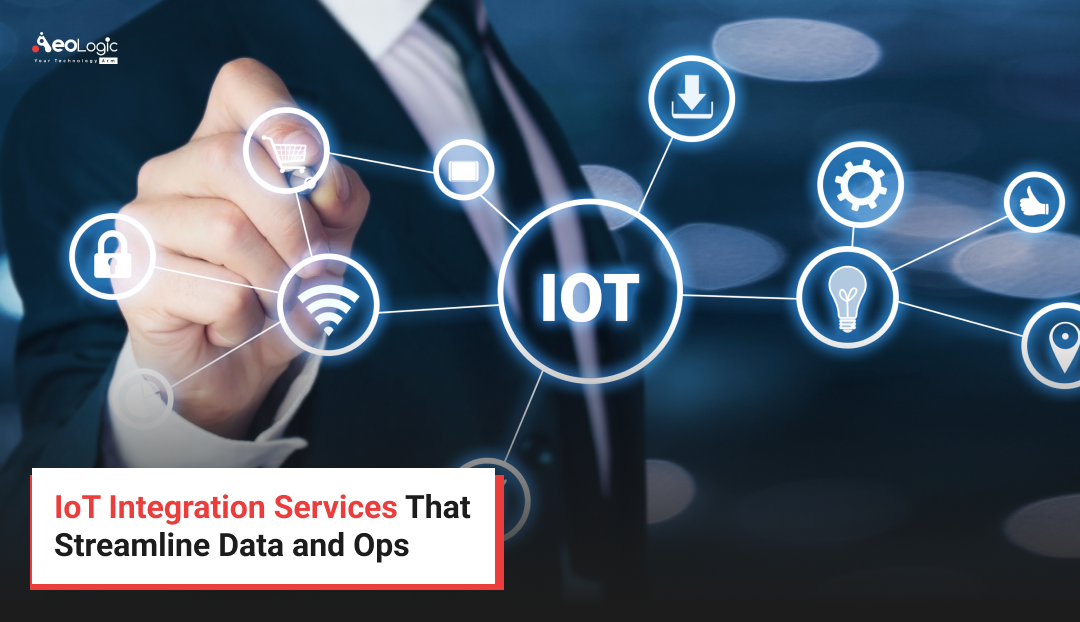Organizations, businesses, regions, nations, etc, can face emergencies anytime, anywhere. It is important to have the best management system that can manage emergencies and have predictive safety models. There could be various issues like disasters, fire, accidents, disputes, and much more. Not having emergency preparation and safety models could lead to various problems for the people, such as social disruptions, greater economic disruptions, erosion of public trust, inefficient resource allocation, delayed recovery, risk of casualties, and much more.
This all can affect the people and normal citizens in a bad manner that could be hard to recover from. Conventional methods may be effective, but cannot manage critical emergencies appropriately and efficiently. Generative AI-powered solutions can boost emergency preparedness and enable predictive safety models.
Overview
The generative AI and machine learning algorithm can analyze situations and different emergency scenarios to prepare the best solutions to manage any type of emergency. The predictive safety models powered by gen AI can predict the risk and emergencies before too much potential damage.
The generative AI offers various key applications for emergency preparedness and predictive safety models like data analysis, early warning system development, automated emergency response plan, drill and exercise support, risk prediction and assessment, fall prevention, cybersecurity and infrastructure risk, and early warning system.
Looking for? Top Generative AI Solutions Provider in India
Key Statistics
The artificial intelligence in the disaster response and emergency management market has grown strongly in recent years. It is expected to grow from $140.96 billion in 2024 to $154.22 billion in 2025, at a compound annual growth rate (CAGR) of 9.4%. The artificial intelligence in the disaster response and emergency management market is expected to see strong growth in the next few years. It will grow to $219.86 billion in 2029 at a compound annual growth rate (CAGR) of 9.3%.
- Studies show a 25% improvement in collision prediction accuracy and a 2.5-second reduction in response time with AI-driven systems in automotive safety. Globally, 82% of national disaster response agencies have integrated AI systems, and AI-assisted operations have seen a 58% reduction in emergency response time compared to manual methods. AI-coordinated search-and-rescue operations have reported a 32% increase in survival rates in disaster zones.
- 45% faster evacuation times reported in cities using AI-optimized emergency alerts (Red Cross 2025 Global Report).
- 33% increase in successful aid deliveries during floods and typhoons, due to AI-guided logistics systems 60% of emergency personnel reported improved morale when using AI assistance tools that reduced chaos during response operations.
Explore more: Role of Generative AI Solutions for Businesses Growth
What is the Role of Generative AI in Emergency Preparedness?
Generative AI in boosting emergency preparedness and predictive safety models generally refers to the solutions that can provide the right tips and techniques to prevent any type of casualties during emergencies. Also, the generative AI-powered predictive analytics can be used to prepare such models that can sense the disruptions before they turn into emergencies to prevent any type of damage or potential harm to the public and infrastructure.
With the conventional methods, this cannot all be achieved as they do not offer such advanced facilities to deal with emergencies. Overall, the generative AI models are great tools or solutions to safeguard the future of any nation, organization, or place from natural, artificial, or accidental disaster to create a safe environment.
Also Read: How Generative AI is Revolutionizing Industries in 2025
How Generative AI in Emergency Preparedness Enhances Predictive Safety Models
As emergencies grow in frequency and complexity, traditional modes of disaster preparedness and response often are unable to keep pace.
Generative AI is emerging as a revolutionary technology that will democratize emergency preparedness by utilizing enhanced predictive safety models and evolving response strategies. It differs from traditional AI, as it is capable of simulating various scenarios, generating synthetic data of low probability events, and aiding in real time decision making, making it extremely valuable for preparing for risks and enhancing safety protocols.
Generative AI creates value for emergency planners and responders by providing actionable insights that enhance situational awareness and resource allocation as a result of combining climate records, satellite imagery, social media, and sensor feeds. The value of generative AI also stems from its ability to model cascading effects, such as those that arise from an earthquake that triggers landslides or ignites fires, thereby allowing for comprehensively more risk management.
Moreover, generative AI can complement communication by developing tailored messaging and instructing the public in emergencies.
This technology is changing every stage of emergency preparation from pre-event risk prediction, response or real time tactical operation. To post-event recovery assisting organizations to reduce harm, save lives, and rapidly recover community.
Key Use Cases and Practical Examples of Generative AI in Emergency Preparedness
| Use Case | Examples |
|---|---|
| Prediction and Risk Modeling | Generative AI creates detailed simulations and scenarios to anticipate potential disasters and their impact. • Scenario generation: AI models generate multiple “what-if” disaster scenarios, such as floods or industrial accidents, enabling planners to prepare for diverse outcomes. • Synthetic data creation: When real data is limited, generative AI produces realistic datasets to train predictive models for rare events, improving forecast accuracy. |
| Real-Time Emergency Response | Generative AI aids in simulating emergency response options and optimizing resource deployment during crises. • Dynamic response planning: AI generates adaptive plans based on evolving conditions, such as changing weather or infrastructure damage. • Predictive safety models: AI forecasts secondary risks (e.g., aftershocks, fires) helping responders mitigate cascading hazards. |
| Communication and Public Engagement | AI generates clear, context-aware messages for public alerts and guidance, improving communication efficacy. • Automated alert drafting: Generative AI creates tailored evacuation notices or safety instructions based on local conditions and population needs. • Chatbot support: AI-powered chatbots provide real-time assistance, answering questions and guiding affected individuals during emergencies. |
| Recovery and Post-Event Analysis | Generative AI helps model recovery scenarios and assess damage to prioritize rebuilding efforts. • Damage simulation: AI synthesizes data from various sources (drones, satellite images) to create comprehensive damage maps. • Resource optimization: AI models different recovery plans to recommend the best allocation of resources for infrastructure repair and community support. |
Applications of Generative AI in Boosting Emergency Preparedness
There are various key applications of generative AI in boosting emergency preparedness and predictive safety. Here are a few mentioned below.
Scenario Simulations and Training
Scenario simulations and training for emergencies are important aspects of preparing for the emergency. The traditional methods do not offer a scenario simulation facility and training for emergencies. The generative AI algorithm can analyze the historical data and incidents to make scenario simulations for the upcoming time. This also helps to allocate resources in a better manner. With the integration of VR/AR technology, it is possible to get real-world training.
Early Warning System
It would be a great thing if there were an early warning system for upcoming disasters to implement preventive and safety protocols as soon as possible. The traditional system cannot make an early warning that results in damage to various aspects. The generative AI-powered system can analyze various data from various sources like satellite imagery, IoT sensors, and social media. This helps to develop a real-time early warning system for emergencies. This is a great system to get some early time to prepare.
Planning and Documentation
Planning and documentation are also necessary to make planning organized and in a structured manner. The generative AI-powered algorithm can analyze the various aspects to make planning and documentation in a serial manner. This makes everything together in a structured manner to better understand emergencies. The generative AI automatically provides the post-disaster reports generation and training materials to make administrative operations flow smoothly and efficiently.
Community Engagement
Community engagement should be active to understand the people’s needs in emergencies. Generative AI can create a great community engagement way by analyzing different social dynamics and vulnerabilities. This helps the main authorities to understand the different people’s needs from different regions to provide them with the required resources in times of emergency. This technology also develops different platforms to connect different communities with each other.
Risk Prediction and Assessment
Disaster prediction is another key application of generative AI for emergency preparedness. The traditional methods do not offer predictive ability to predict risk and assessment to mitigate them. The generative AI-powered algorithm can analyze the various data and detect the unusual patterns that may require human analysis. This helps to provide predictive analytics that show the possible type, timing, and nature of risk to take the best measures that enable the least damage.
Fall Prevention and Safety Detection
Every individual’s safety management is crucial during emergencies. The traditional methods do not offer individual safety solutions, as they offer generalized solutions. The generative AI solutions can detect every individual’s conditions, such as fall detection, health casualties, and physical instability. The generative AI solutions also develop wearable devices with the integration of IoT technology to remotely monitor every individual’s conditions, which enhances everyone’s safety and movement tracking.
Cybersecurity and Infrastructure Protection
Cyberattacks are also a type of disaster and can create emergencies that can damage the infrastructure of any organization. The traditional system cannot strengthen cybersecurity to prevent modern and ever-evolving cyberattacks. Where the generative AI solutions can analyze the cybersecurity system codes and automatically make that upgrade. This helps to prevent any type of disruptions and emergencies that could damage the infrastructure and data privacy.
Also Read: Challenges and Benefits of Generative AI in Businesses
What are the Benefits of Generative AI in Emergency Preparedness
As emergency incidents and natural disasters continue to grow in the scale and complexity, the need for new preparedness and response approaches is critical. Many organizations and governments can now leverage technology for situational awareness, better decision making, and more effective community protection from harm.
Enhances Predictive Capabilities
Generative AI examines a variety of data across multiple sources to find patterns that can predict emergencies before they happen. This makes it possible to provide earlier warnings and preparation for events such as flooding, wildfires, or earthquakes.
Faster and Smarter Decision-Making
Once a disaster is in play, timing is everything, and the choice one makes can save lives. Generative AI can quickly process information in the real world and evaluate it, simulate plans, and recommend courses of action. 
Improved Resource Allocation
All of this can help emergency managers prioritize decision making and allocate limited resources effectively.
Generative AI will not only help to target personnel, equipment, and supplies in an emergency on where and when they will be needed the most, but it will also reduce waste, along with allowing aid and support to arrive faster for people by improving overall first responders’ effectiveness.
Continuous Learning and Adaptation
Generative AI systems utilize past incidents and present data input streams to learn and iterate on their models.
This adaptability will improve future emergency preparedness and response by consistently revising risk and action plans.
Also Read: The Role of Robotics, AI, and Automation in Healthcare
Enhanced Communication and Coordination
AI-driven insights can be integrated through emergency communication platforms, helping to provide clear, data-informed information for responders, government agencies, and the public. This helps to reinforce coordination and minimize confusion during disaster events.
By applying generative AI to emergency preparedness, organizations can improve their ability to anticipate, respond to, and manage disasters.
Challenges with Generative AI While Implementing for Emergency Situations
Generative AI offers new, exciting possibilities for emergency preparedness and response, but there are multiple issues that prevent the effective implementation of the technology. Understanding these issues is important for developing effective solutions.
AI Hallucination
A substantial concern is AI hallucination – generative AI providing inaccurate, or fraudulent information. Hallucinations can be challenging in the generative AI space during emergencies. Hallucination typically means producing misinformation due to some sort of technical fault and has the potential for consequence in emergencies, which may lead to incorrect decisions and response.
In the emergency context, inaccurate information could lead to wrong decisions, poor timing of response and misallocation of resources. If generative AI provides information that is inaccurate, it can also worsen an already complex and unsure circumstance. It is important to take under consideration, not just the reliability and validation of the generative AI information outputs, but also its limitations.
Explore more: Role of Technology in Government and Public Sector
Real-Time Processing Limitations
Emergencies often depend on instant decisions, but generative AI is ultimately dependent upon crunching and analyzing a lot of data and running different models using varying parameters, which could make generative AI take time.
AI can accomplish data processing quicker than people in a lot of circumstances, however speed does still cause latency in situations that are uncertain or completely changing. Optimizing generative AI technology for speed is a challenge, generating models quickly without introducing bias to accuracy is the challenge.
High Computational and Infrastructure Costs
Constructing and implementing generative AI applications for massive emergencies, incurs a great deal of computational resources and requires huge infrastructure to manage the build, and process.
The costs of computational resources and infrastructure can often be prohibitive, leaving many developing nations or smaller agencies with little or no possibility to use advanced AI-based emergency tools.
Cloud-based solutions and shared services could present some relatively low-cost options, but issues of connection and security could become significant concerns.
Data Availability and Quality
The usefulness of generative AI depends on the amount and quality of incoming data. In many emergency situations, however, the data may be incomplete, stale, and unreliable, impacting AI recommendations and predictions.
Furthermore, bringing data together from multiple sources, such as weather sensors, social media posts, and satellite feeds, creates both technological and logistical issues.
Also Read: Top AI and Machine Learning Use Cases Across Industries
Integration with Existing Systems
Numerous emergency management organizations depend on current systems and previous processes. In order for generative AI to operate effectively and efficiently with an existing infrastructure, most organizations will need to plan, check compatibility, and train personnel, potentially elongating the adoption of generative AI.
Dependence on Technology and Skill Gaps
To properly utilize generative AI, will be people that have knowledge of AI technologies, and knowledge of emergency management. A lack of trained personnel could inhibit the ability of the organization to really capitalize on the system, and may increase the likelihood of improper interpretation or use.
Final Take
Generative AI seems to be the most important tool for emergency preparedness and safety predictive model development. The emergency situations should be managed in an advanced manner and efficiently to prevent any type of casualties, and generative AI-powered solutions are doing great.
The upcoming trends like digital twins, autonomous response system development, global resilience networks, etc, are also going to bring more scenarios, simulations, and many other futuristic applications. Overall, the generative AI consulting are definitely going to be adopted by every region and organization to safeguard their people and infrastructure.
Also Read: How AI/ML Can Change the Public Transportation Industry
FAQs
How reliable is generative AI in forecasting natural disasters?
Generative AI can improve natural disaster forecast analysis through its ability to analyze large datasets that contain weather information, seismic events, and historical data.
Generative AI can improve forecast accuracy through its ability to find connections and correlations that maybe humans overlook. Nevertheless, it is not without its challenges or mistakes augmented by data quality, training of the model, and the need for periodic upgrading of their information.
Ultimately, generative AI is a tool to be used in conjunction with more traditional forecasting methods providing additional inputs to assist agencies in furthering their early warning and preparedness functions.
What role does generative AI play in real-time emergency decision-making?
Generative AI can facilitate decision-making in emergency situations by processing incoming data from different sources like sensors, social media feeds, and satellite feeds in real-time.
It can also model many scenarios, predictive the outcomes, and rapidly recommend the best next steps.
This allows emergency responders to prioritize locations requiring immediate attention, assign resources to critical and uncritical areas, and change strategies in real-time to be more effective and save lives.
How does generative AI integrate with existing emergency management systems?
Generative AI can merge with emergency management systems through API and data sharing gateways as an advanced capability for analysis and predictions. Also, Integrating with the operation of command centers, alert and notification systems and communication routes can position generative AI to provide insights and automated recommendations on demand.
For emergency management agencies, the integration can provide the opportunity to operationalize generative AI-supported aspects of forecasting, risk assessments and response plans while leveraging existing workflows and infrastructure.
Are there any privacy or ethical concerns with using generative AI in emergencies?
Yes, there are privacy and ethical challenges to bear in mind. Generative AI typically needs to access private, sensitive data, i.e., personal information and location tracking, which creates a privacy question.
It’s important to focus on the security of data, consent of users, and compliance to laws and regulations.
Ethically, we always need to consider the possibility of bias within AI models that can disproportionately impact populations that are already marginalized or just unfairly apportioned resources.
In a responsible manner, we need to enact transparent algorithms, be accountable, and monitor processes constantly.

I’m Deepika Pandey, an SEO strategist and content writer with 6+ years of experience. I create SEO-friendly content that drives traffic and engages readers. I combine data insights with creativity to help businesses grow their online presence effectively.






